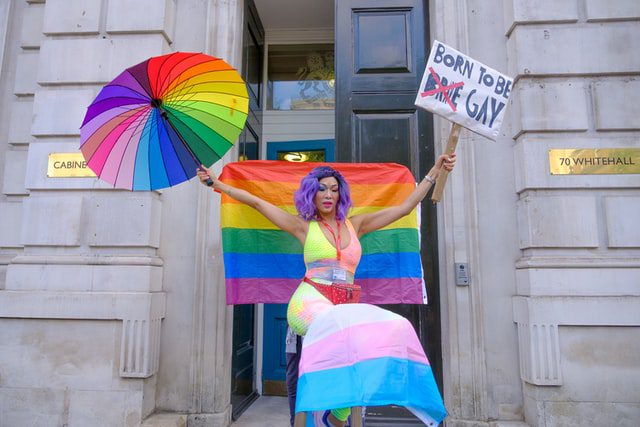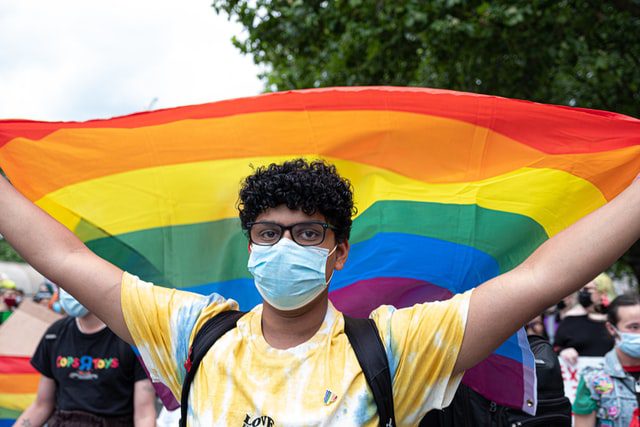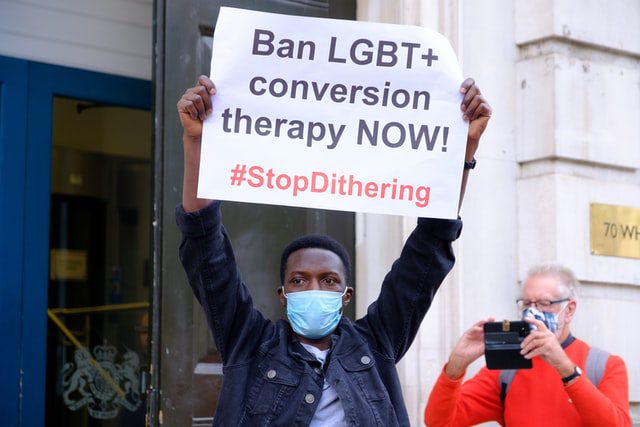
The Disturbing Origins Of Gay Conversion Therapy
Conversion therapy refers to any attempt to alter the gender identity, orientation, or gender expression of an individual. It is a concept that has been around since the end of the 19th century. Despite insurmountable scientific evidence that it is not effective, even that there is no way to alter the traits that conversion therapy usually targets, it remains operational in the shadows of today’s society. Due to its rapid decline in popularity, however, practitioners have resorted to regularly renaming their practices as a hope to avoid being detected.
The underlying prior assumption of the medical and mental health professions today is that sexual orientation and gender identity are normal and natural, and freedom of gender expression should be encouraged. There is no need to try and alter either of these. Although this has unfortunately not always been the case.
Sexual orientation and gender identity have been at the forefront of some heated debates in the past as it is a topic that so many people have such extreme opinions on. This might make it a difficult but absolutely essential topic to address.

In this article, we explore more about what conversion therapy/reparative therapy is, where conversion therapy comes from, and what is being done to protect the LGBTQ youth from its devastating effects. We will also take a look at some of the effects that conversion therapy/reparative therapy practices have on individual lives. Needless to say, this is a sensitive topic and the utmost care has been taken to be respectful and supportive of the LGBTQ community.
Trigger Warning
Due to the sensitive nature of this topic, we do want to bring to your attention the possibility that some of the content going forward might trigger some uncomfortable feelings or responses. If you are very sensitive to topics like this and fear that you might be triggered, then we do urge proceeding with caution, or rather avoiding the rest of this article if possible.
While we have taken the greatest care to try and minimize any discomfort to the reader, there is always still a risk of some of the content being too much for you. If the article does cause feelings of discomfort, please talk to someone about it.
History of Conversion Therapy
In order to really understand conversion therapy and the need to change an individual’s sexual orientation and gender expression, to accurately spread awareness, we, unfortunately, have to take some time to take a look at its history. Where does conversion therapy come from? How has conversion therapy evolved throughout the years that it has been in practice? Can we possibly learn from our past mistakes with issues like conversion therapy?

The foundation for conversion therapy was laid in 1899 when a German psychiatrist claimed that he had altered a man’s homosexual orientation with hypnosis. At the time, same-sex attraction was seen as sinful and eventually ended up under the medical model which labeled it a mental disorder. It was subsequently expected for the medical and psychiatric community to treat it as such.
Notably, however, the so-called ‘father of psychology’, Sigmund Freud, was quite adamant that homosexuality was not, per se, a mental disorder, but rather that we are all born bisexual, and sexual orientation then differentiates according to external influences. Despite this progressive stance for his time, Freud was unable to influence the majority of his colleagues who continued to believe that homosexual orientation was deviance.
This resulted in some seriously disturbing treatments involving anything from testicular transplants, electroshock therapy, and lobotomies in an attempt to ‘cure’ homosexuality.

The true emergence of conversion therapy stems from ‘aversion’ therapy which functioned from the premise that if homosexual and bisexual individuals could become averted to same-sex sexual experiences they would be cured. This often involved behavioral treatments such as administering drugs that caused vomiting when being shown images of same-sex sexual content, or the more extreme, receiving electric shocks, sometimes to the genitals, upon same-sex sexual stimulation.
For most of these therapies, claims of success were not accurately documented.
The first real change started to come about in the 60s and 70s when public protests persisted. This led to the removal of homosexuality from the diagnostic and statistical manual in 1973 and spurred widespread professional rejection of homosexual and bisexual issues as disorders. This was bolstered by the lack of hardy scientific credibility of these treatments.
However, when the mental health and medical communities began to distance themselves from conversion therapy practices, faith-based groups took over. Many instances of abuse related to these treatments emerged over the years in the wake of its reform.
For example, there was a case reported in 2019, where a Catholic parish hosted a group of people who were known for involvement in conversion therapy practices for a conference on the topic. This specific group had already been accused and admitted to cases of sexual abuse involved in their ‘treatments’.[1]
Another example is of a young woman from Colorado who committed suicide after ‘religious counseling’ at her local Catholic church which she described, to a friend and family member, as akin to conversion therapy.[2]
By the 2010s, an active political stance against conversion therapy had reached a point where protection orders for LGBTQ youth were being actively signed into legislation by several states. These bills prohibit a licensed healthcare professional from providing conversion therapy for minors. And although the degrees of success for this venture vary, it is an essential step in the right direction towards freedom of gender expression.
We still have a long way to go, but we are laying clear and solid foundations towards the protection of all LGBTQ individuals from the harmful practices of conversion therapy, both within the medical and psychiatric communities, but also within the wider scope of society.
Conversion Therapy for Minors vs Adults

This is one of the most difficult aspects of this topic to accurately address in modern society. Mostly this can be attributed to the issue of consent. Minors are still under the age of majority, which means that their parents are the ones who consent to any treatments administered to them, albeit medical, psychiatric, or otherwise.
This means that they are not able to stand up for themselves, in any significant legal capacity, when it comes to unwanted ‘treatment’. In turn, this makes it easier for legislation to protect LGBTQ youth from such harmful ‘treatments’ as conversion therapy.
With adults, it is more difficult because they can exercise their free will (in legal terms) and can withhold consent of treatment in any form. They are responsible for themselves and can, theoretically, willingly choose to undergo conversion therapy should they wish. This is something that is very difficult to challenge legally. Of course, there are other factors that we need to consider in terms of adults, such as emotional vulnerability and the fear of rejection.
But when we look at the matter only in terms of legality and the right to freedom of choice, it is easier for governments to protect LGBTQ youth in the context of conversion therapy for minors than conversion therapy for adults.
Gender Identity and Sexual Orientation
It has, by now, been irrefutably proven that gender identity and sexual orientation identity are not choices that we make. They are innate, and many have accepted that they are also perfectly normal and natural, even when they differ from our own. Even when we do not necessarily understand, we have learned to respect and accept. The freedom to express gender identity and sexual orientation is a basic human right in today’s society and should be treated as such, not as a mental disorder. We also need to acknowledge the relief that gender expression can bring in cases of gender dysphoria.
Although we can always expect that there will be some individuals who cannot accept and who will not respect individuality in terms of sexual orientation or gender identity, we have to at least make an effort to spread enough awareness to allow people the chance to make an informed choice.
The only way that we can spread awareness is to talk about it.
Even the difficult things like conversion therapy/reparative therapy need to be discussed so that people can understand and see why and how conversion therapy practices are harmful. Surely a society that has since abandoned the once common institution of the insane asylum can someday soon reach the same conclusion about conversion therapy practices?
In order for this dream to be realized, three things need to be achieved:
- People need to understand and accept that gender identity and sexual orientation are innate and normal.
- People need to understand that conversion therapy/reparative therapy does not work.
- People need to understand that conversion therapy/reparative therapy is harmful.
It is with these three goals in mind that we continue this article. So whether you are part of the LGBTQ community or whether you are just looking to broaden your horizons, we hope to shed some light on conversion therapy/reparative therapy practices and exactly why they are so harmful and have proven so difficult to eradicate. Societal stigmatization discussed is generalized and might not be the case for most people today.

Human Sexuality
A notable element of conversion therapy/reparative therapy is that it often takes techniques that are used to treat actual mental illnesses and incorporates them into the ‘treatment’ to change sexual orientation or gender identity. The argument often used to substantiate the attempt to change an individual’s sexual orientation is that clients are distressed by their sexual attractions or that they want to become sexually fluid. Regardless of any ‘supporting’ terminology used in an attempt to justify such treatments, there is clear evidence that conversion therapy increases the rates of suicide, depression, HIV and STD’s as well as substance abuse.
We understand now, perhaps better than we have before, that human sexuality is innate and natural. We also understand that it is highly varied and that there are large pockets of the population who do not yet understand its nuances very well. This leads to misinformation, misunderstanding, and can cause ugly clashes between communities.
What is arguably most important is to preserve the right to freedom above all things. Freedom to express gender but also to express opinions without fear of retribution or persecution. What is important in terms of these opinions is that we need to ensure that they are informed opinions and that they are not coming from a position of lack of understanding.

Youth and Conversion Therapy
When it comes to conversion therapy, the youth are the most vulnerable to it. This is simply because minors are still under the care of their parents, and if the parents are not opposed to conversion therapy practices and the state they live in does not protect LGBTQ youth from conversion therapy practices, then there is little that stands in the way of a young person being subjected to these practices.
With adults, the situation is a little bit more difficult to quantify. Generally speaking, one assumes that an adult can and will say ‘no’ if they are not comfortable with something. However, we also must bear in mind that adults can also find themselves in vulnerable emotional states. The fear of being rejected or abandoned by family and community members can sometimes drive even adults to agree to such interventions that are harmful to them.

Shift to Person-Centered Approaches
Psychiatric treatment and other mental health services have come a long way since the days of the insane asylum and there has been a steep increase in the emphasis of the ‘person-centered’ approach to mental health. This is an extremely important thing that happened. History has shown that, for a long time, psychiatric treatment existed to help society with individuals that were deemed a nuisance, or otherwise burdensome in one way or another. However, with the eradication of institutionalization and the era of the insane asylum, the purpose of psychological interventions and psychiatric treatments has abandoned their alignment with society and rather shifted their allegiance to align with their patients. It is important to understand the implications of this shift.
With the dawn of the person-centered approach came the responsibility to the patient’s wellbeing almost exclusively. This quickly saw a shift towards acceptance of one’s self, and by extension, one’s gender identity. The fight for individuality and the celebration of diversity took off and more and more research emerged that supported the idea that both sexual orientation and gender identity are innate and cannot/should not be changed. This led to increased efforts to encourage and normalize gender expression. Suddenly therapeutic intervention was in favor of gender expression and it was acknowledged, publicly, that the only successful treatment option for gender dysphoria was gender affirmation surgery.
This would create an essential divide between responsible mental healthcare providers and the implementations of conversion therapy practices. While there will always be outliers who will continue to attempt the therapy under one name or another, the vast majority of healthcare providers condemn it outright. This has left most cases of conversion therapy up to religious institutions who often attempt it without the assistance of a licensed healthcare professional.
Common Consequences of Conversion Therapy
Substance Abuse
A well-documented consequence of conversion therapy is an increase in substance abuse among individuals who have been subjected to conversion therapy at some point in their lives. This is indicative of the harmful effects of conversion therapy.
Overall, any so-called therapy that leads to increased incidents of self-destructive behavior should be questioned. Therapeutic intervention should be something that decreases instances of mental disorders and self-destructive behavior, not increase it.
The abuse of substances hardly ever exists in isolation and often occurs due to attempts at coping with strong emotions or trauma.

Severe Depression
It is, therefore, not surprising to see severe depression on the same list as substance abuse. Mainly because it is often a failed attempt to cope with feelings of severe depression. One of the main consequences of undergoing conversion therapy seems to be feelings of severe depression. And as much as we can speculate as to the reason behind this for quite some time, what is more important is to acknowledge, once again, that any kind of therapy that results in an increased risk of severe depression should seriously be questioned.
Suicide Attempts
Again, it is hardly surprising to see suicide attempts listed alongside severe depression and abuse of substances. These three things often coexist.
What we do need to mention here is to remember that mental health services differentiate between actual suicides and suicide attempts. They are reported differently. There are several reasons for this, but the most important thing is that one group of people has survived and now requires intervention. The intervention of suicide attempts is absolutely essential because one major risk factor for suicide attempts is a history of past suicide attempts. It is one of only a very small handful of situations within the mental health profession that are deemed ’emergencies’ and require immediate intervention.
HIV and STD’s
The increased prevalence of HIV and STDs among individuals who have undergone conversion therapy can be traced directly back to the ‘shame’ principle that many of these therapies are based upon. Shame and disgust for certain types of sexual attraction, sexual orientation, or gender identity are commonly encouraged through conversion therapy practices which causes an increase in subsequent risky sexual behavior. Because we know that sexual orientation and gender identity cannot be changed, it is easier to understand that although the feelings of shame and disgust have been placed within the individual’s consciousness, the sexual orientation or gender identity is still there. And there is still a need to express it in order to be whole.
This leads to secretive behaviors. A desire to keep desires from everyone else. Therefore, riskier sexual exploits are undertaken in the search for satisfying interpersonal relationships of an intimate or sexual nature. Despite efforts to change one’s sexual orientation, the need for intimacy will persist, even through failures to change one’s sexual orientation. One’s mental health depends on healthy interpersonal relationships.
Attempts to Avoid Detection
As briefly mentioned, due to its lack of popularity and quite frankly, its horrible reputation, many people who practice conversion therapy have resorted to changing the name of their practices often. This seems to help them avoid detection to a certain extent and gives them room to try and justify their practices.
Some common alternative names or descriptions for conversion therapy practices are: Sexual Attraction Fluidity Exploration in Therapy (SAFE-T), the Ex-gay ministry, reparative therapy, Sexuality counseling, Sexual Orientation Change Efforts (SOCE), promoting healthy sexuality, healing sexual brokenness, sexual reorientation efforts, encouraging relational and sexual wholeness, eliminating, reducing or decreasing frequency or intensity of unwanted Same-Sex Attraction (SSA), and addressing sexual addictions and disorders, to name a few.
This list is not exhaustive and as time goes by, more and more terms will likely be added. This is another reason why understanding is so valuable. When we understand what conversion therapy is and what it entails it is easier to identify such practices and eradicate them.
Position Statement of Individual Healthcare Organizations
Due to the increased pressure from the public to protect LGBTQ youth and the broader community from the harms of conversion therapy, many public healthcare organizations have released official position statements against conversion therapy practices. There are also steps being taken by several local governments in order to legally protect LGBTQ youth from these practices.
Here are only a few official position statements that have been released in the last few years.
Mental Health Professionals in General
Mental health professionals today all know that gender identity is not a disease or something abnormal that needs to be treated, in fact, a licensed healthcare professional will usually encourage people to embrace their gender identity and sexual orientation as living your life true to your gender identity is one step closer to self-actualization, which is an important goal of person-centered treatment models. Even many a governing board now encourages mental health professionals to speak against conversion therapy and to embrace gender expression.
However, this was unfortunately not always the case. In the past, there had been attempts at changing sexual orientation made through psychological interventions and psychiatric treatment. But that is no longer the case.
These days changing sexual orientation is no longer a goal of any health professional. Rather the support and treatment of comorbid conditions associated with anxiety related to gender dysphoria are what is treated. Human sexuality and the expression thereof are seen as natural.
Conversion therapy lacks scientific credibility and therefore therapeutic intervention is not indicated. Gender identity change efforts are not part of the professional view on human sexuality, especially not among sexual minority youths. If someone comes in wanting to change their sexual orientation or mirror others’ sexual orientation a healthcare provider would counsel against it. Patients are encouraged to embrace their sexual orientation or gender identity, rather than attempt to change it.
Public Organizations

American Psychiatric Association[3]
“Psychotherapeutic modalities to convert or ‘repair’ homosexuality are based on developmental theories whose scientific validity is questionable. Furthermore, anecdotal reports of ‘cures’ are counterbalanced by anecdotal claims of psychological harm. In the last four decades, ‘reparative’ therapists have not produced any rigorous scientific research to substantiate their claims of cure. Until there is such research available, [the American Psychiatric Association] recommends that ethical practitioners refrain from attempts to change individuals’ sexual orientation, keeping in mind the medical dictum to first, do no harm.
The potential risks of reparative therapy are great, including depression, anxiety and self-destructive behavior, since therapist alignment with societal prejudices against homosexuality may reinforce self-hatred already experienced by the patient. Many patients who have undergone reparative therapy relate that they were inaccurately told that homosexuals are lonely, unhappy individuals who never achieve acceptance or satisfaction. The possibility that the person might achieve happiness and satisfying interpersonal relationships as a gay man or lesbian is not presented, nor are alternative approaches to dealing with the effects of societal stigmatization discussed.
Therefore, the American Psychiatric Association opposes any psychiatric treatment such as reparative or conversion therapy which is based upon the assumption that homosexuality per se is a mental disorder or based upon the a priori assumption that a patient should change his/her sexual homosexual orientation.”
These words from the American Psychiatric Association are so important. One specific reason why is because the influence of the American Psychiatric Association reaches beyond the bounds of the US. Even some African countries are influenced by decrees by the American Psychiatric Association, which makes it a very important voice in the fight against conversion therapy the world over. Some other countries have abandoned conversion therapy and attempt to change sexual orientation because of boards like the American Psychiatric Association speaking against conversion therapy.

American Counseling Association[4]
The ACA Governing Council passed a resolution in 1998 with respect to sexual orientation and mental health. This resolution specifically notes that ACA opposes portrayals of lesbian, gay and bisexual individuals as mentally ill due to their sexual orientation.
On conversion therapy specifically:
We found that the majority of studies on this topic have been expository in nature. We found no scientific evidence published in psychological peer-reviewed journals that conversion therapy is effective in changing an individual’s sexual orientation from same-sex attractions to opposite-sex attractions. Further, we did not find any longitudinal studies conducted to follow the outcomes for those individuals who have engaged in this type of treatment. We did conclude that research published in peer-reviewed counseling journals indicates that conversion therapies may harm clients.
[T]he ACA Ethics Committee strongly suggests that ethical professional counselors do not refer clients to someone who engages in conversion therapy or, if they do so, to proceed cautiously only when they are certain that the referral counselor fully informs clients of the unproven nature of the treatment and the potential risks and takes steps to minimize harm to clients. . . . This information also must be included in written informed consent material by those counselors who offer conversion therapy despite ACA’s position and the Ethics Committee’s statement in opposition to the treatment. To do otherwise violates the spirit and specifics of the ACA Code of Ethics.”
American Psychological Association[5]
“Therefore be it resolved that the American Psychological Association affirms that same-sex sexual and romantic attractions, feelings, and behaviors are normal and positive variations of human sexuality regardless of sexual orientation identity;
Be it further resolved that the American Psychological Association reaffirms its position that homosexuality per se is not a mental disorder and opposes portrayals of sexual minority youths and adults as mentally ill due to their sexual orientation;
Be it further resolved that the American Psychological Association concludes that there is insufficient evidence to support the use of psychological interventions to change sexual orientation;
Be it further resolved that the American Psychological Association encourages mental health professionals to avoid misrepresenting the efficacy of sexual orientation change efforts by promoting or promising change in sexual orientation when providing assistance to individuals distressed by their own or others’ sexual orientation;
Be it further resolved that the American Psychological Association concludes that the benefits reported by participants in sexual orientation change efforts can be gained through approaches that do not attempt to change sexual orientation;
Be it further resolved that the American Psychological Association advises parents, guardians, young people, and their families to avoid sexual orientation change efforts that portray homosexuality as a mental illness or developmental disorder and to seek psychotherapy, social support and educational services that provide accurate information on sexual orientation and sexuality, increase family and school support, and reduce rejection of sexual minority youth;
Be it further resolved that the American Psychological Association encourages practitioners to consider the ethical concerns outlined in the 1997 APA Resolution on Appropriate Therapeutic Response to Sexual Orientation (American Psychological Association, 1998), in particular the following standards and principles: scientific bases for professional judgments, benefit and harm, justice, and respect for people’s rights and dignity.”
A Final Word on Conversion Therapy
Belonging to a particular sexual orientation or gender identity is a normal part of human development, and nothing about being part of a sexual or gender minority is anything to be ashamed of. Gender expression is a thing to be encouraged and praised.
For these reasons, conversion therapy is one of the most shocking circumstances to persist within civilized society today. Despite painstaking efforts to eradicate conversion therapy, there are still instances reported right in our backyard, and at this point in time conversion therapy is one of the most important obstacles to equality and civility.
We need to continue concerted efforts to protect the youth and the general public from instances of conversion therapy, no matter what name it might be hiding behind, and transgressors of legislation against conversion therapy should be punished.
Ultimately, this will be the only way that we can move beyond it.
References
- Ring, T., 2019. Catholic parish hosts Conversion Therapy Group accused of abuse. ADVOCATE. Available at: https://www.advocate.com/religion/2019/9/29/catholic-parish-hosts-conversion-therapy-group-accused-abuse [Accessed January 25, 2022].
- Julig, C., 2020. A young woman’s suicide puts focus on Church’s counseling for LGBT Catholics. National Catholic Reporter. Available at: https://www.ncronline.org/news/people/young-womans-suicide-puts-focus-churchs-counseling-lgbt-catholics [Accessed January 25, 2022].
- Board of Trustees. 2022. Therapies Focused on Attempts to Change Sexual Orientation (Reparative or Conversion Therapies). [ebook] Washington, DC: American Psychiatric Association. Available at: <http://media.mlive.com/news/detroit_impact/other/APA_position_conversion%20therapy.pdf> [Accessed 24 January 2022].
- Counseling.org. 2022. Ethical issues related to conversion or reparative therapy. [online] Available at: <https://www.counseling.org/news/updates/2013/01/16/ethical-issues-related-to-conversion-or-reparative-therapy> [Accessed 24 January 2022].
- Anton, B. S. (2010). Proceedings of the American Psychological Association for the legislative year 2009: Minutes of the annual meeting of the Council of Representatives and minutes of the meetings of the Board of Directors. American Psychologist, 65, 385–475. doi:10.1037/a0019553



